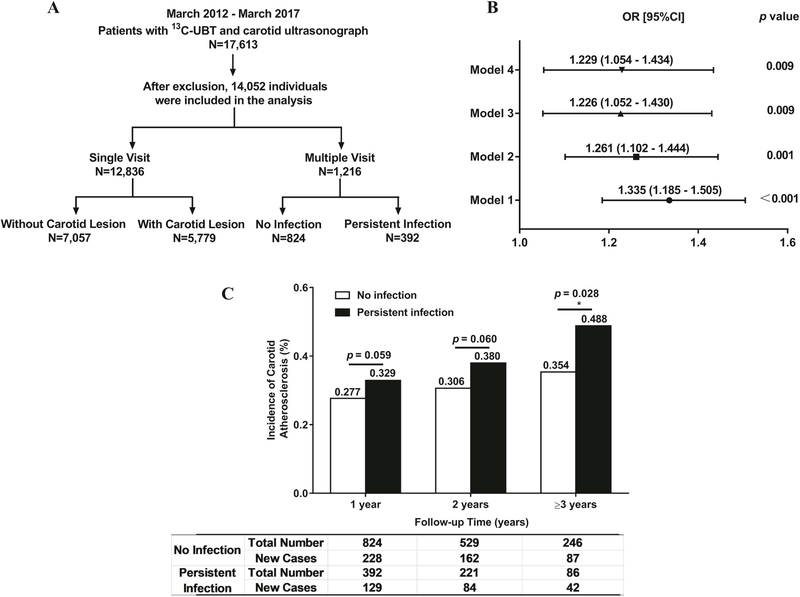Fig. 1.
Study design and relationship between H. pylori infection and carotid atherosclerosis.
(A) The subjects were screened and divided into different groups based on the methods of analysis for the study. (B) After adjusting for age, sex, BMI, lipid profile, HTN, DM, smoking, and alcohol use, H. pylori infection was found to be an independent risk factor for carotid atherosclerosis for male patients ≤50 years. Model 1: not adjusted; Model 2: adjusted for age, sex, smoking, alcohol use, and BMI; Model 3: adjusted for all the factors in Model 2 plus blood pressure, HDL, LDL, and total cholesterol; Model 4: adjusted for all the factors in Model 3 plus diabetes mellitus. BMI: body mass index; DM: diabetes mellitus; HDL: high-density lipoprotein; LDL: low-density lipoprotein; HTN: hypertension. (C) Analysis on the follow-up patients showed that patients with persistent H. pylori infection had significantly increased risk for carotid atherosclerosis after 3 years of follow up only in males under 50 years, not in females (p = 0.028).

